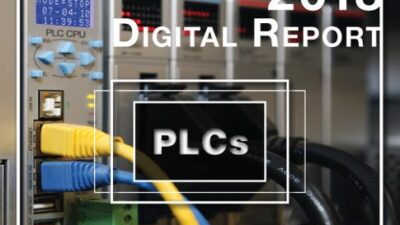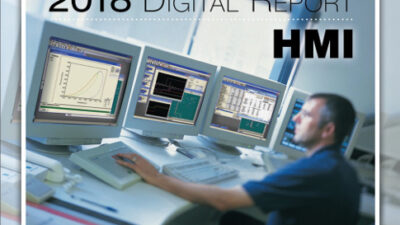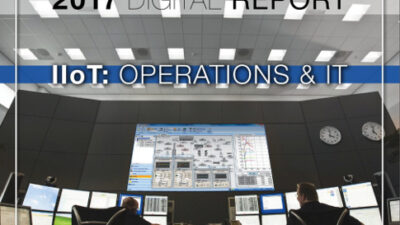Releasing the industry's first open specification for self-powered, wireless sensors, EnOcean Alliance says it moved closer toward becoming an international standard. Beckhoff Automation, DisTech Controls, Texas Instruments, Wago, and Weiland are among users.
|
Graham Martin, chairman and CEO of the EnOcean Alliance, shows several devices presently available, powered, according to the specification, by kinetic energy, solar energy, or thermal differences.
|
San Ramon, CA – A wireless energy harvesting standard moved closer to reality as the EnOcean Alliance, an international consortium of 120 companies serving building and industrial sectors, today announces the publication of its first global, open specification for energy-harvesting wireless sensors. EnOcean Equipment Profiles (EEP), alliance standardization guidelines, ensure interoperability among devices of various manufacturers. Jointly produced by EnOcean Alliance members, the public specification is accessible to everyone and presently contains 50 equipment profiles supporting the development of a variety of solutions, primarily for building automation, but also applicable for some industrial applications. Currently available EEPs include switches, remote controls, sensors, sensor combinations and data of every kind, the organization said in its Nov. 11 statement.
Jointly devised specification
Graham Martin, chairman and CEO of the EnOcean Alliance, said, "Publication of the first specification for EnOcean sensors is extremely important for the EnOcean Alliance because it ensures continuing seamless interoperability between EnOcean-enabled solutions across the spectrum of manufacturers. Moreover, it’s the first step taken by the Alliance towards formal recognition as an international standard."
|
How EnOcean wireless, energy harvesting sensor technology works Learn more through EnOcean Inc. or EnOcean Alliance. Beckhoff Automation, DisTech Controls, Texas Instruments, Wago, and Weiland are among users. Members number more than 130. – Mark T. Hoske, editor in chief, Control Engineering www.controleng.com |
The specification was devised by the EnOcean Alliance technical working group (TWG), which undertook the task of standardizing EnOcean technology on an international scale to ensure interoperability for many sensor-based building automation applications. EnOcean Alliance member companies currently offer more than 350 products based on EnOcean technology, all of which provide interoperability by virtue of their rigid adherence to firmly defined equipment profiles established in the EnOcean Alliance specification.
Non-proprietary communication : As a prerequisite for enabling equipment from different manufacturers to communicate and work together in building automation systems, interoperability demands adherence to clearly defined rules and standards. For example, all components must use the same data formats or protocols as set forth in the profile definitions. In a system with interoperable components that work according to a profile definition, it is possible to combine a receiver from manufacturer A with a sensor from manufacturer B and a sensor from manufacturer C performing the same function. In this way, non-proprietary, smart solutions for energy-efficient building automation are easily implemented throughout the enterprise.
First open specification for energy harvesting wireless sensors:At present the published specification contains 50 EEPs describing different switching functions, remote controls, sensors and combinations of sensors for temperature, brightness, motion and humidity. Additional profiles are also defined for switching actuators, dimmers and other devices, with new EEPs under development, including demand response, smart grid and smart ACK.
EnOcean Equipment Profiles define the functionality of EnOcean-enabled equipment independently of manufacturer. To ensure interoperability among EnOcean-based products, every manufacturer must provide a binding declaration prior to product introduction demonstrating that their solution meets the EnOcean Alliance specification though compliance with one or more EEP.
The new document is the first official specification to compile and publish the EEPs, paving the way for global proliferation of EnOcean technology driving the development and manufacture of new types of equipment. For users, the directive means that they have an even greater selection and more implementation possibilities as a result of a growing number of products and suppliers. While the specification is open, products designed using the specification require a small licensing fee. Martin made the announcement Nov. 11, at Greenbuild 2009, Phoenix, AZ, Nov. 10-12.
– See other Control Engineering EnOcean coverage .


